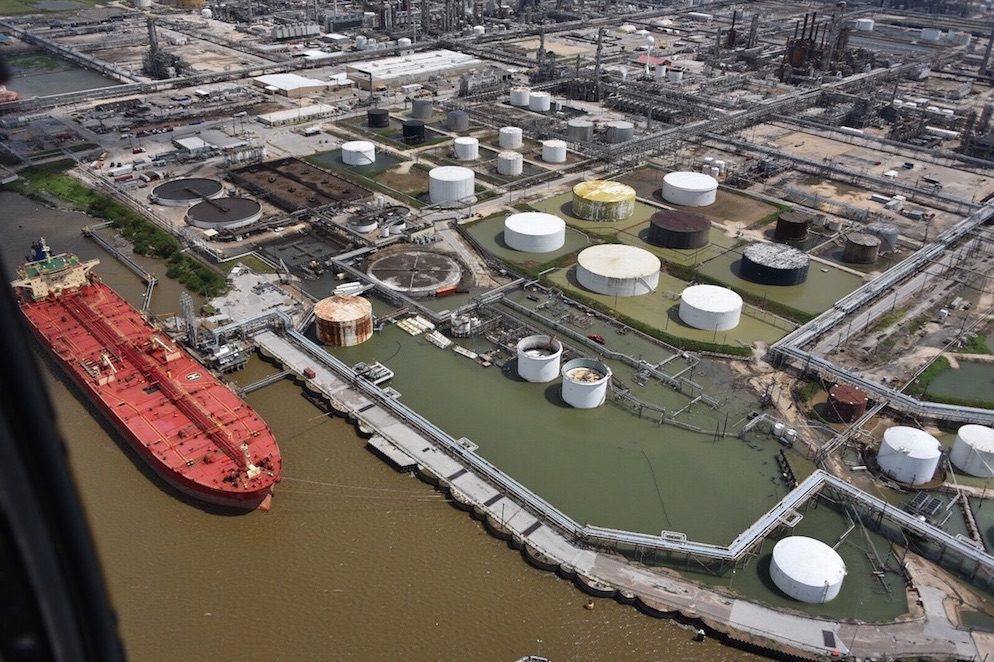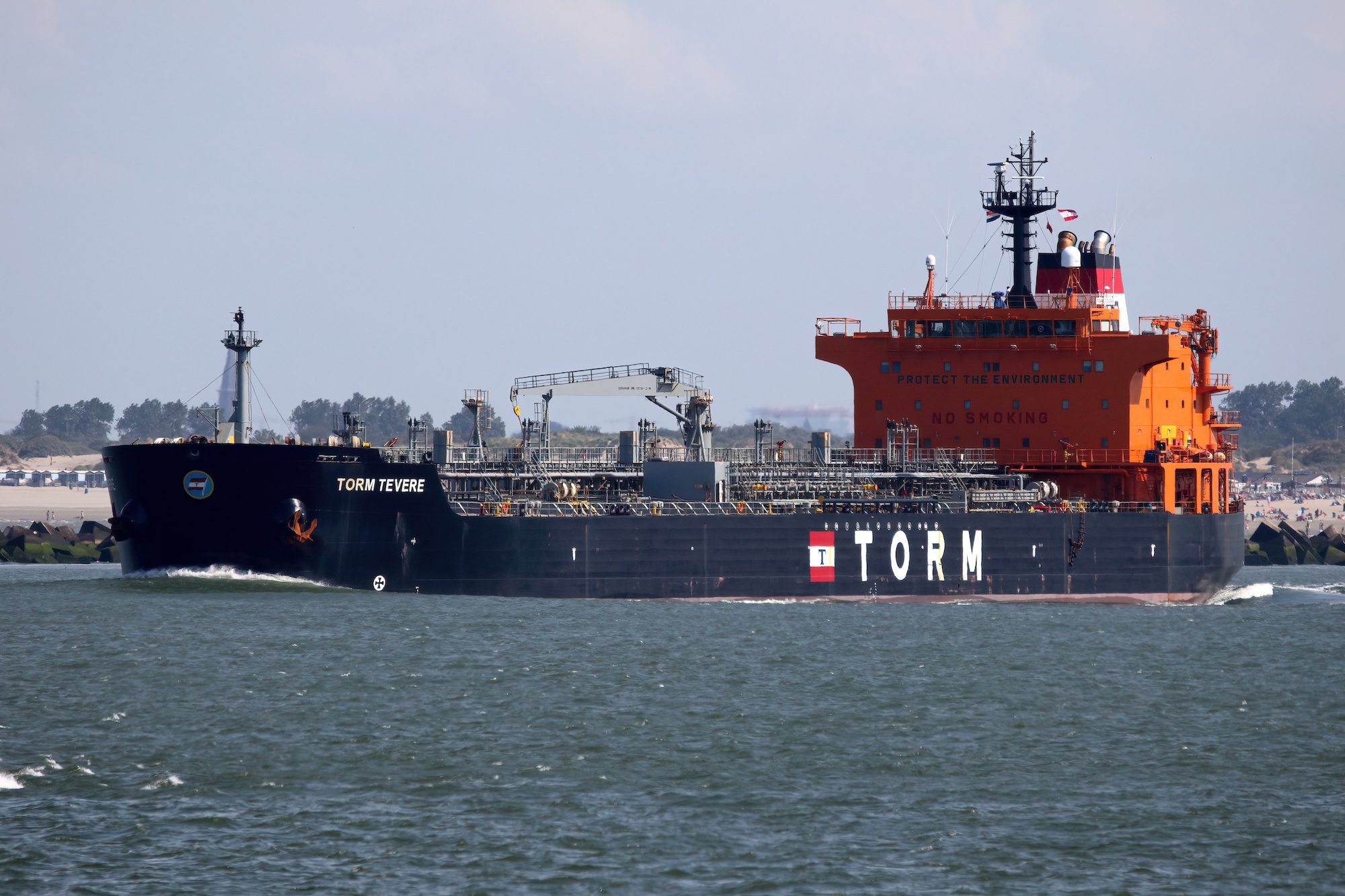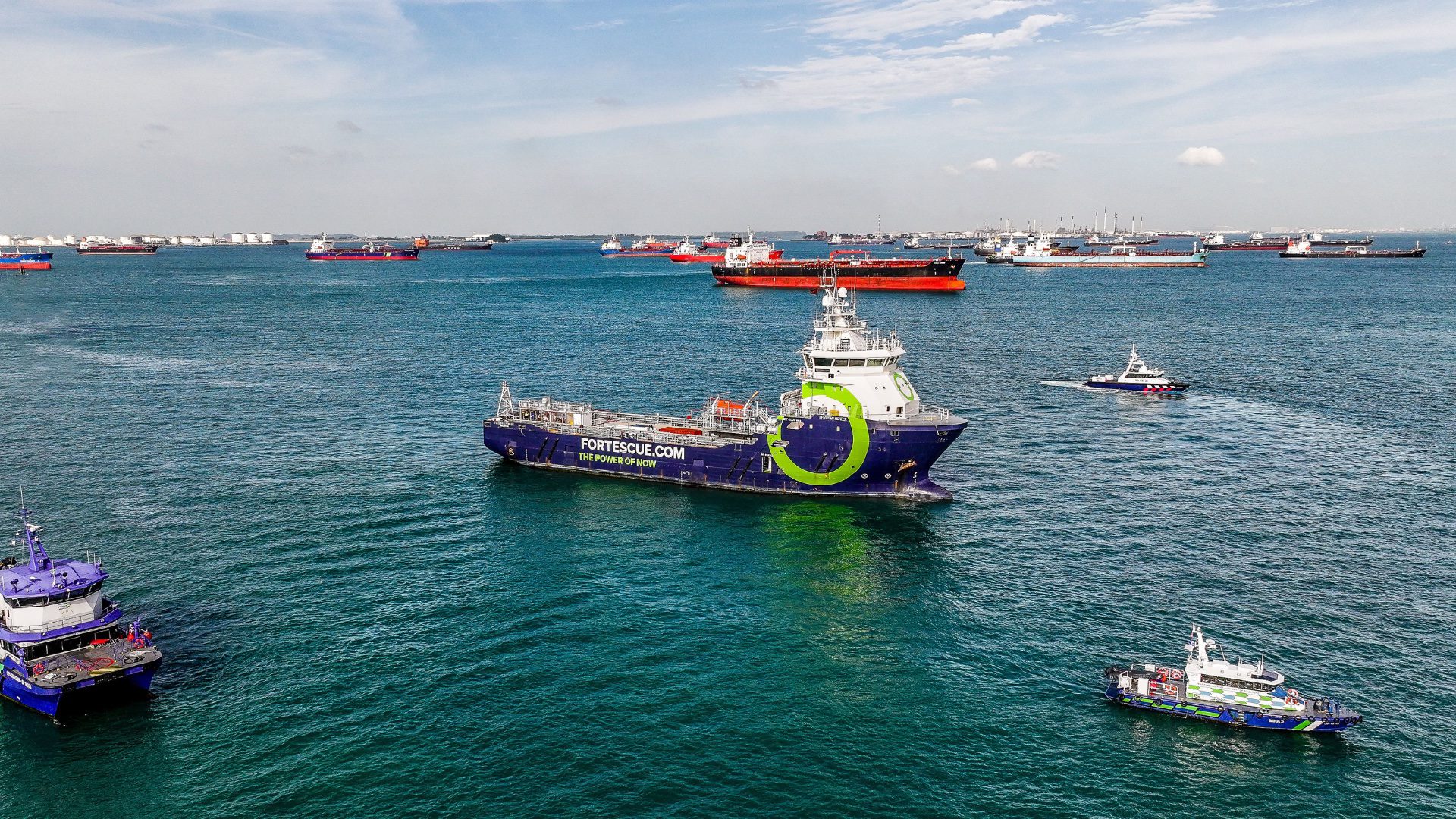Coast Guard aircrews conduct flyovers to assess the ports of Houston, Texas City, Freeport and Galveston, Aug. 31, 2017.
 By Erwin Seba and David Gaffen HOUSTON, Sept 12 (Reuters) – U.S. refineries are restarting after Hurricane Harvey forced them to shut down two weeks ago, raising the risk of fires and explosions that could prolong fuel supply disruption as plants simultaneously reheat units and reactivate catalysts.
By Erwin Seba and David Gaffen HOUSTON, Sept 12 (Reuters) – U.S. refineries are restarting after Hurricane Harvey forced them to shut down two weeks ago, raising the risk of fires and explosions that could prolong fuel supply disruption as plants simultaneously reheat units and reactivate catalysts.
Restarts are one of the most dangerous times for refinery workers, so operators keep shutdowns to a minimum. Plants typically shut only a few units for overhaul in spring and fall, with most refinery units remaining in operation for 4-6 years between full maintenance shutdowns.
Harvey sparked several unscheduled closures, taking offline refineries capable of processing around 4.4 million barrels per day of crude, about a quarter of U.S. capacity to produce gasoline, diesel and jet fuel.
Six refineries are currently restarting along the Texas Gulf Coast, according to their owners, some of them after dealing with several feet of floodwater in their facilities. Already, some of the difficulties are appearing, as market sources told Reuters on Monday that Total’s Port Arthur refinery could be closed for weeks after Tropical Storm Harvey caused crude oil to plug a key pipeline.
“Any time you have water in a refinery you have to do lube checks on every instrument, which is literally thousands of checks,” Gary Simmons, senior vice president of supply and operations at Valero, told a conference last week.
Three of Valero’s five Gulf refineries were shut by Harvey.
Motiva’s 603,000 bpd Port Arthur plant in Texas is the largest U.S. refinery and one of the six restarting operations. The plant was down for 10 days, and as much as 6 million barrels of fuel output has already been lost. It aimed to return to 40 percent of capacity this week, according to a company spokeswoman.
A major concern, according to sources familiar with operations there and at other refiners, is whether the pumps that supply the crude to the refinery will run successfully after being underwater for several days.
Motiva declined to comment on the pumps or on the restart.
The refinery was concentrating on restarting units that produce gasoline, kerosene and diesel, according to these sources. Those units were built during Motiva’s $10 billion expansion process finished in 2012.
They include the large crude unit, which can process up to 325,000 barrels of oil a day. Refinery crude units produce the feedstock needed for other units.
Other units also built during the expansion include a 105,000 bpd hydrocracker, which produces diesel and naphtha from gasoil, and the 110,000 bpd coker, which makes coker gasoline, petroleum coke, and other materials from sludgy oil that is a byproduct of initial distillation.
Flooding delayed Motiva workers in accessing facilities to see what needed to be dried, and what may need replacing.
The recently constructed facilities were built at higher level than original parts of the plant, sources said, so the flooding was less severe there.
EXPORTS
The Gulf Coast accounts for most U.S. energy exports. Shipments of diesel, jet fuel and other products from the Gulf to international buyers have increased by 50 percent over the last five years, to an average of 3.1 million barrels a day, according to the U.S. Energy Information Administration.
Units that help meet that demand are the ones that refiners want to get working quickly.
“On the startups you’re certainly trying to get the process units in the refineries that produce the highest margins – the units taking low-value feedstocks and turning them into high-value products,” said Eric Dietert, partner at consulting firm ERM in Houston.
Units that grew cold when shut down and drenched with rain are now being reheated to hundreds of degrees. The strain that puts on the refinery during a restart are enormous and can reveal flaws that have developed in machinery.
The worst refinery disaster during this century happened during a restart, when a unit at what was then BP Plc’s Texas City refinery exploded, killing 15 people. The March 23, 2005 blast came as BP was finishing a planned, multi-unit overhaul.
Plant operators were unable to see the unit was overfilling, eventually sending volatile liquid raining out of a 170-foot tall tower.
The U.S. Chemical Safety Board issued a safety alert to refiners the day before Harvey pummeled Beaumont and Port Arthur, noting the higher level of attention needed as “many automatic systems are run under manual control.”
Pumps and compressors that move oil through refineries are at ground level, and at some plants have been under water for several days. Market sources said that at Total’s plant, the pipeline in question carries sour crude to the refinery’s two crude distillation units (CDUs).
It was shut by a power outage in the early morning of Aug. 30. The pipe then was cooled by 20 inches (50 cm) of rain, the sources said.
“If you have an incident during startup, that can lead to significant damage, particularly with the more complex units, which are the upgrading units,” said Roland Kell, a former refining executive and now an independent consultant.
Refiners also have to contend with other damaged infrastructure that are disrupting supply chains.
Colonial Pipeline Co, which sends 3 million barrels of gasoline and other fuels made by Gulf refiners to markets on the East Coast every day, said its tank farm in the Port Arthur area was damaged.
That will likely limit the ability of refiners to ship fuel, and may encourage refiners coming back online to export more. (Reporting by Erwin Seba and David Gaffen; additional reporting by Jessica Resnick-Ault; Editing by Simon Webb and Dan Grebler)
(c) Copyright Thomson Reuters 2017.

 Join The Club
Join The Club











